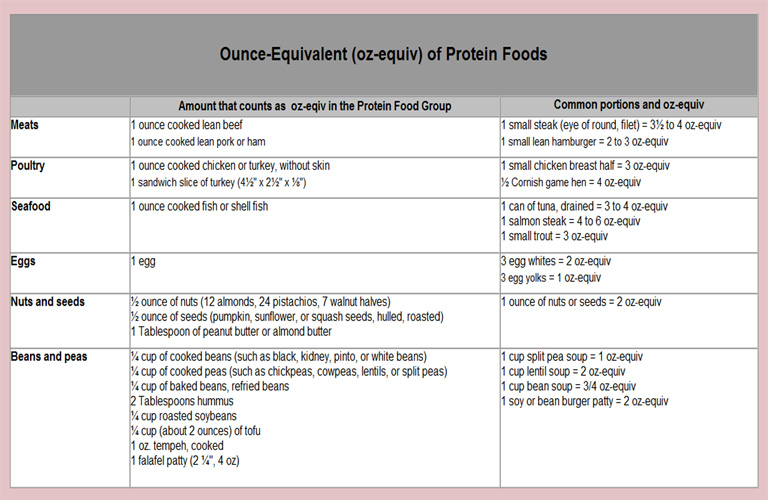Proteins
Proteins are found in every living cell in the body and participate in virtually every process within cells. Our bodies need protein from the foods we eat to build and maintain bones, muscles and skin. Proteins are composed of chains of amino acids. A total of 20 different amino acids exist in proteins and hundreds to thousands of these amino acids are attached to each other in long chains to form a protein. Proteins differ from one another primarily in their sequence of amino acids, which is dictated by the nucleotide sequence of their genes, and which usually results in protein folding into a specific three-dimensional structure that determines its activity.
The body can synthesize all but nine essential amino acids from the food we eat. A food that contains all nine essential amino acids is called a complete protein food. This means they supply all of the amino acids the body can't make on its own. Examples are animal products, including meat, milk, cheese, fish, and eggs.
A food source that does not contain all nine essential amino acids is called an incomplete protein food. Most plant proteins are incomplete. Vegetables, grains, and legumes are principal sources of incomplete protein. However, soy beans and tofu (soy bean curd) are sources of complete protein. You should eat different types of plant proteins every day to get all of the amino acids your body needs.
Beans and peas can be counted in either Protein Foods Group or Vegetable Food Group because they contain nutrients that are similar to foods in the Protein Foods Group (protein, iron, and zinc) and the Vegetable Group (fiber, potassium, and folate). Because of their high nutrient content, consuming dried beans and peas – and lentils, too – is recommended for everyone, including people who also eat meat, poultry, and seafood regularly.
The amount of food an adult needs from the Protein Foods Group depends on age, sex, and level of physical activity. The recommended amount varies between 5 to 7 ounce equivalents per day.
In general, 1 ounce of meat, poultry or fish, ¼ cup cooked beans, 1 egg, 1 tablespoon of peanut butter, or ½ ounce of nuts or seeds can be considered as 1 ounce-equivalent from the Protein Foods Group.
When even one essential amino acid is missing from the diet, a deficiency can develop.

We get proteins in our diet from meat, dairy products, nuts, and certain grains and beans. Proteins from meat and other animal products are complete proteins.
Vegetarian choices in the Protein Foods Group include beans and peas, nuts, nut butters, and soy products such as tofu, tempeh, and veggie burgers.
Nuts and seeds are good sources of protein, dietary fiber, minerals, and vitamin E.
Too much protein in the diet will be stored as increased body fat.
Did You Know?
All foods made from meat, poultry, seafood, beans and peas, eggs, processed soy products, nuts, and seeds are considered part of the Protein Foods Group.Protein Foods can contribute to sodium intake. For example, packaged and prepared meat, poultry, and seafood products are common sources of sodium (salt). Sodium is added to packaged foods during processing such as in curing meat, enhancing flavor, or as a preservative.
Most people in North America get enough protein in their diets, but may need to make leaner and more varied selections of the foods in the Protein Foods Group. These recommended choices include lean meats, seafood, and plant-based proteins such as dried peas and beans, and nuts.
Protein is important for muscle growth and to repair body tissues. Protein can also be used by the body for energy, but only after carbohydrate stores have been used up.
Including food sources of protein at your meals and snacks can help you meet your protein needs for the day while eating a balanced and healthy diet.





